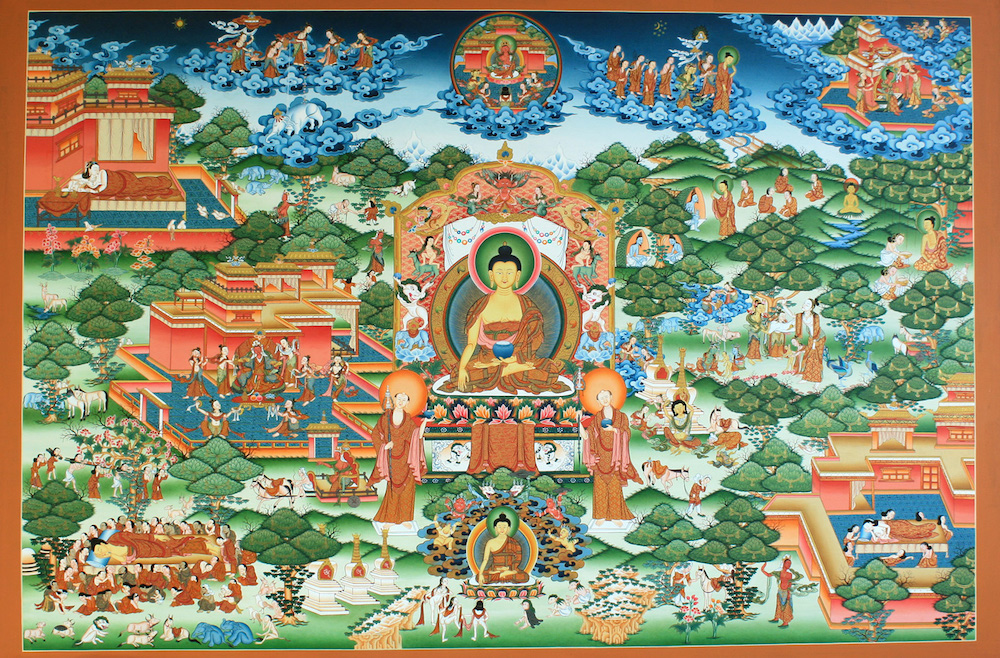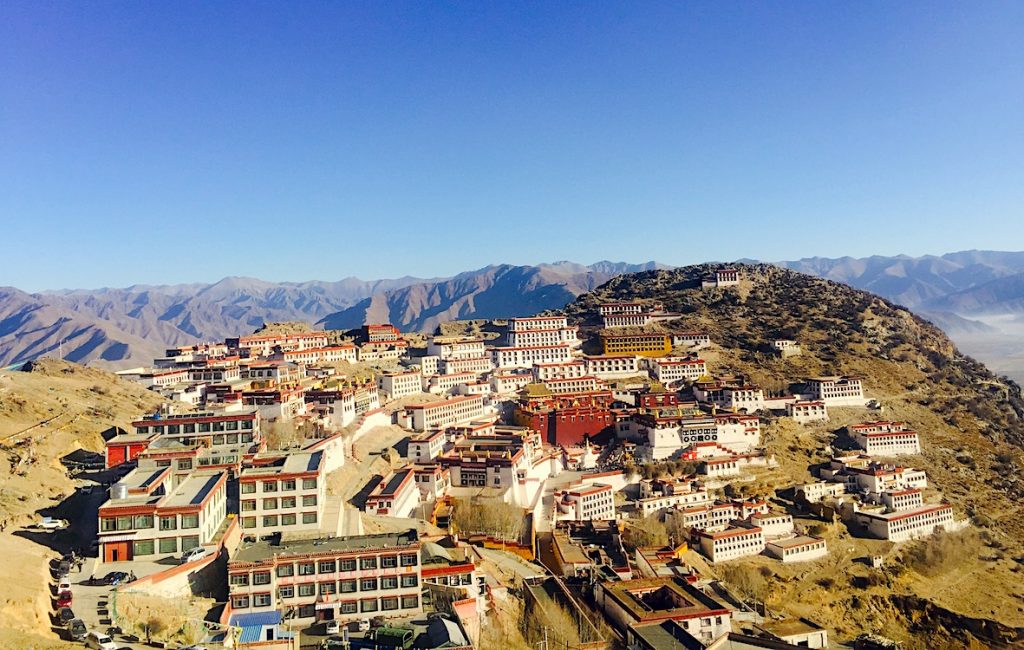Choekor Duchen festival in Tibet is one of the four great seasonal festivals. They are numerous festivals celebrated by the Tibetan and the most important four seasonal festivals celebrated by all Tibetan Buddhists are Losar (Tibetan New Year), Saga Dawa (a month where Buddha was born, enlightenment and death), and Choekor Duchen (Buddha gave teachings on Dharma for the first time after enlightenment) and Lhabab Duchen (a day Buddha descended from the heaven to the earth after given teaching to his mother). During those times, it is believed that the effects of good and bad deeds are multiplied by ten thousand times.

In Tibetan terms, Choekor means Prayer wheel or Dharma wheel, the widespread religious objects available in almost every household in Tibet, and Duchen means great Occasion in Tibetan. Handheld wheels are hollow wooden or metal cylinders attached to a handle that is believed to be spread the spiritual blessing when turned around. Mantras such as Om Mani Padme Hum are believed to invoke the attention and blessing of Chenrezig. The Buddha of compassion may be printed on it. When the prayer wheel turns round, they recited a different prayer.
Choekor Duchen festival, also named as Drukwa Tsezi or Buddha’s Sermon festival. It is a summer celebration that falls on the 4th day of the 6th month of the Tibetan calendar. They commemorate the Buddha’s first turning of the wheel or teaching anniversary upon which Shakyamuni Buddha first began teaching Dharma.

It took the intercession of the great gods, Brahma and Indra, to persuade him to do so for the benefit of all sentient beings. The Buddha then addressed the five people who had been his companions during the time he spent in the forest for meditation concerning the Four Noble Truths: Buddha gave his first teaching at the Deer Park in Sarnath, seven weeks after attaining enlightenment Bodhgaya. The Sarnath is located in Varanasi, India. He expressed his profound realization of the natural existence in the Four Noble Truths.
The four noble truths
1. The Truth of the Nature of Suffering
The Pali or Sanskrit is called Dukka, which means anything temporary, conditional, or compounded. Even something precious and enjoyable is temporary because it ends. Buddha also taught that the skandhas are temporary. The skandhas are the components of a living human being: form, senses, ideas, predilections, and consciousness. In other words, the animated body you identify as yourself is temporary because it is impermanent, and it will eventually perish. The Buddha taught that before we understand death and life, we must understand ourselves.
2. The Truth Of the Origins of the Causes of Suffering
The second noble truth teaches us that the cause of suffering is desire and greed. The Buddha taught that this thirst grows from ignorance of the self. We go through life grabbing one thing after another to get a sense of security about ourselves. We attach to physical things and ideas and opinions about ourselves and the world around us. Then we grow frustrated when the world doesn’t behave the way we think it should, and our lives don’t conform to our expectations. The Buddha’s teaching on karma and rebirth is closely related to the second noble truth.
3. The Truth of the End of Suffering
The Buddha’s teaching on the four noble truths is sometimes compared to a physician diagnosing an illness and prescribing a treatment. The first truth tells us what the illness is, and the second truth tells us what causes the illness. The third noble truth holds out hope for a cure. The Buddha taught that through diligent practice, we could put an end to craving.
4. The Truth of the Eight Fold Path
It means to attain ultimate happiness and freedom from suffering, and here the Buddha as a physician, prescribes the treatment for our illness. The Eightfold Path the path is eight broad areas of practice that touches every part of our lives. It ranges from study to ethical conduct to what you do for a living to moment-to-moment mindfulness. The path addresses every action of body, speech, and mind. It is a path of exploration and discipline to be walked for the rest of one’s life. Without the path, the first three Truths would be a theory, something for philosophers to argue about. The practice of the Eightfold Path brings dharma into one’s life and makes it bloom.
Festival activities
On this special day, Tibet commemorates the day differently depending upon the institution and places. Most of the schools and offices will remain closed, and even most shops will be closed on that day. To commemorate this festival, people would put new clothes the day before and seek to bless a nearby temple. That day family and friends go together for pilgrimage at holy and sacred places like temples and monasteries, and mountain areas to burn the incense and hand prayer flag.

Pilgrims hike the hillock behind the Drepung monastery and Gephel Ri (Gambo Use) to burn the juniper incenses. Men and women wake up early in the morning, go to pilgrimage, offer butter lamps, burn incense in temple and monastery, offer white scarf (Khatak), and seek to bless. In the evening, they return from the pilgrimage, men and women dance in the Lhasa Bakor to celebrate success and happiness for the day. In some places in Tibet, the whole community cleric and laypeople alike join processions bearing statues of the Buddha and copies of scripture. On that day, you can feel a strong religious atmosphere despite the age difference. Everyone will show active engagement to celebrate this festival to show the gratitude of Buddha for his first teaching of Dharma to the sentient beings.

This teaching, referred to as the First Turning of the Wheel of Dharma, led to the formation of the Sangha, the community of disciples committed to following the Buddha’s example of living simply, following the Path, and teaching the Dharma.
